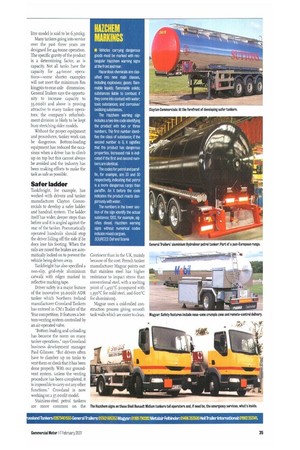MENEM MARKINGS
Page 137

If you've noticed an error in this article please click here to report it so we can fix it.
• Vehicles carrying dangerous goods must be marked with rectangular Hazchem warning signs at the front and rear.
Hazardous chemicals are classified into nine main classes, including explosives; gases; flammable liquids; flammable solids; substances liable to combust if they come into contact with water; toxic substances; and corrosive/ oxidising substances.
The Hazchem warning sign includes a two-line code identifying the product with two or three numbers. The first number identifies the class of substance; if the second number is 0, it signifies that the product has dangerous properties. Increased risk is indicated if the first and second numbers are identical.
The codes for petrol and paraffin, for example, are 33 and 30 respectively, indicating that petrol is a more dangerous cargo than paraffin. An X before the code indicates the product reacts dangerously with water.
The numbers in the lower section of the sign identify the actual substance; 1202, for example, signifies dieseL Hazchem warning signs without numerical codes indicate mixed cargoes.
SOURCES. Daf and Scanra




































































































































































































